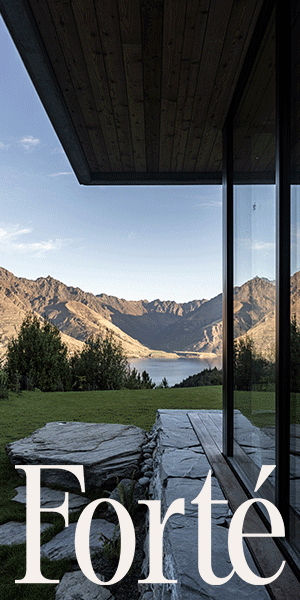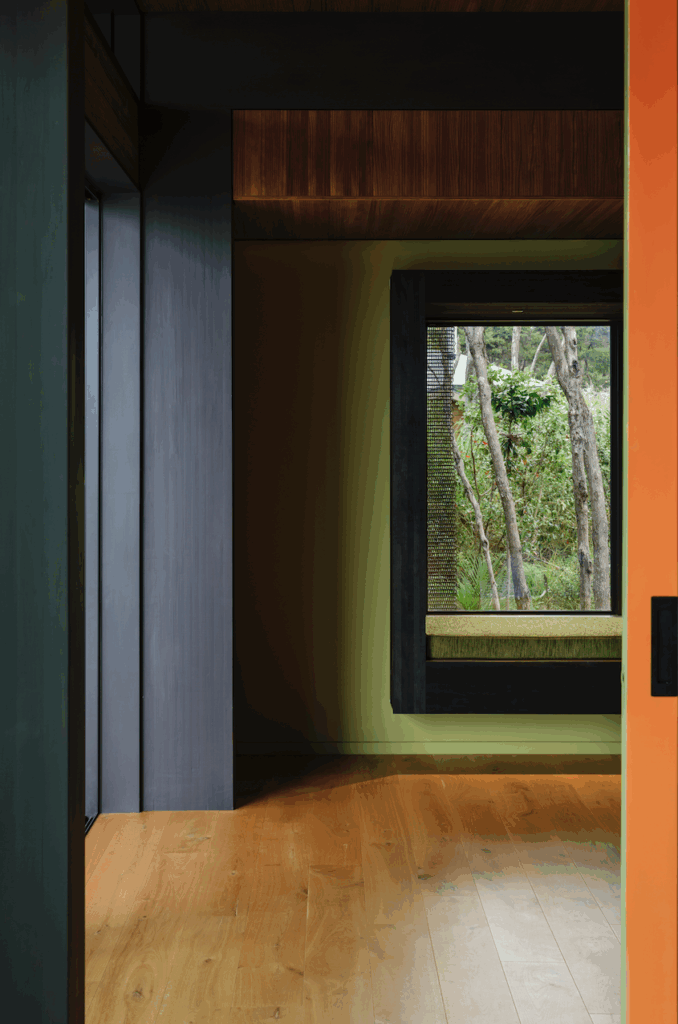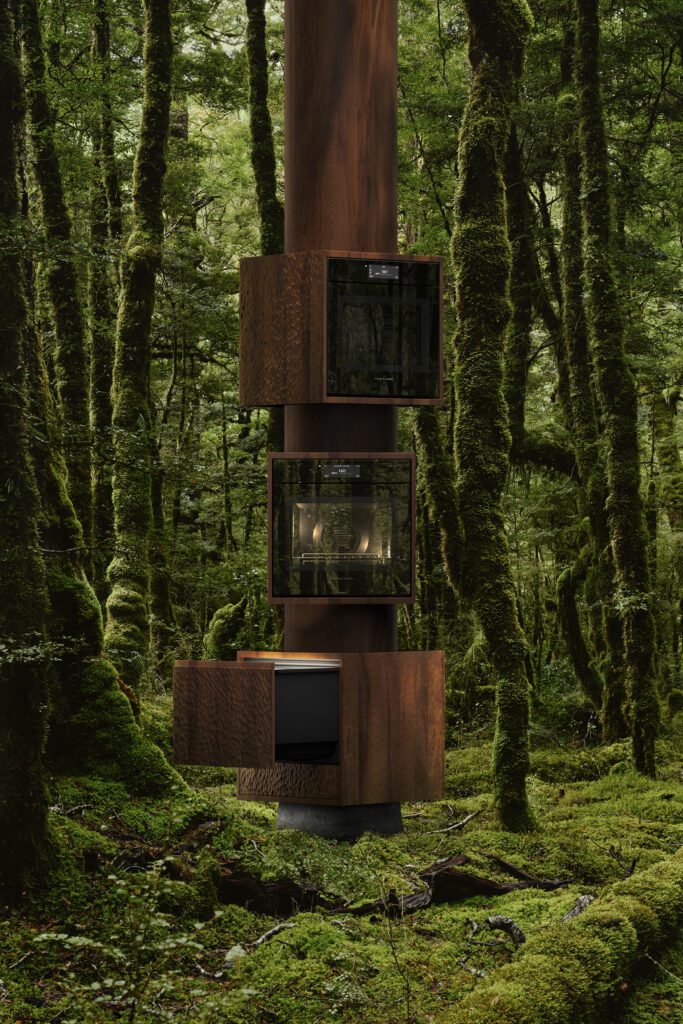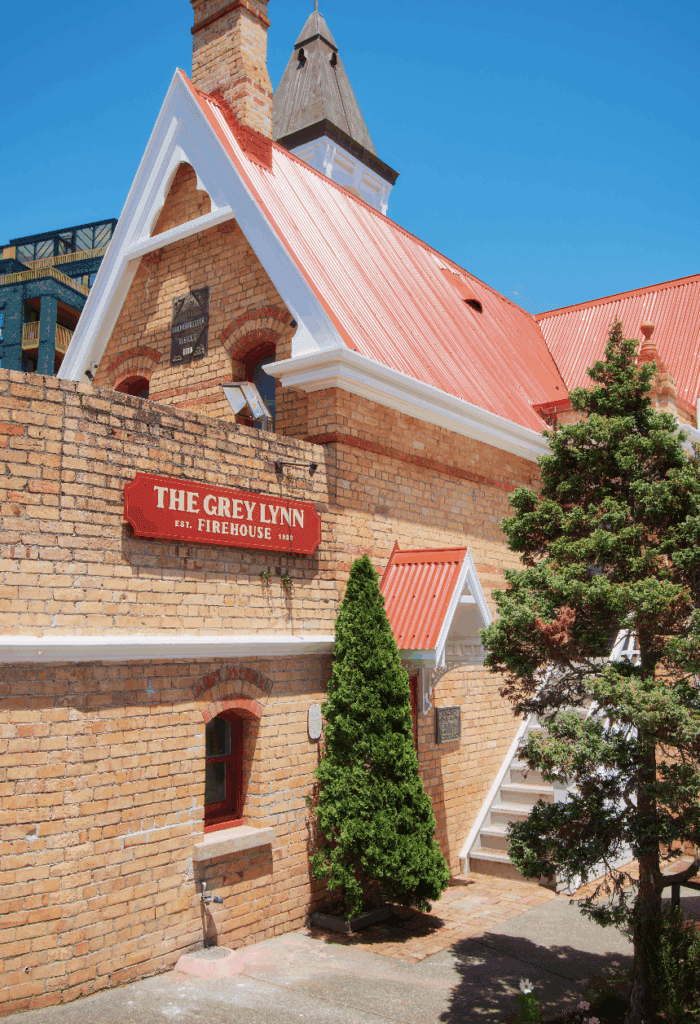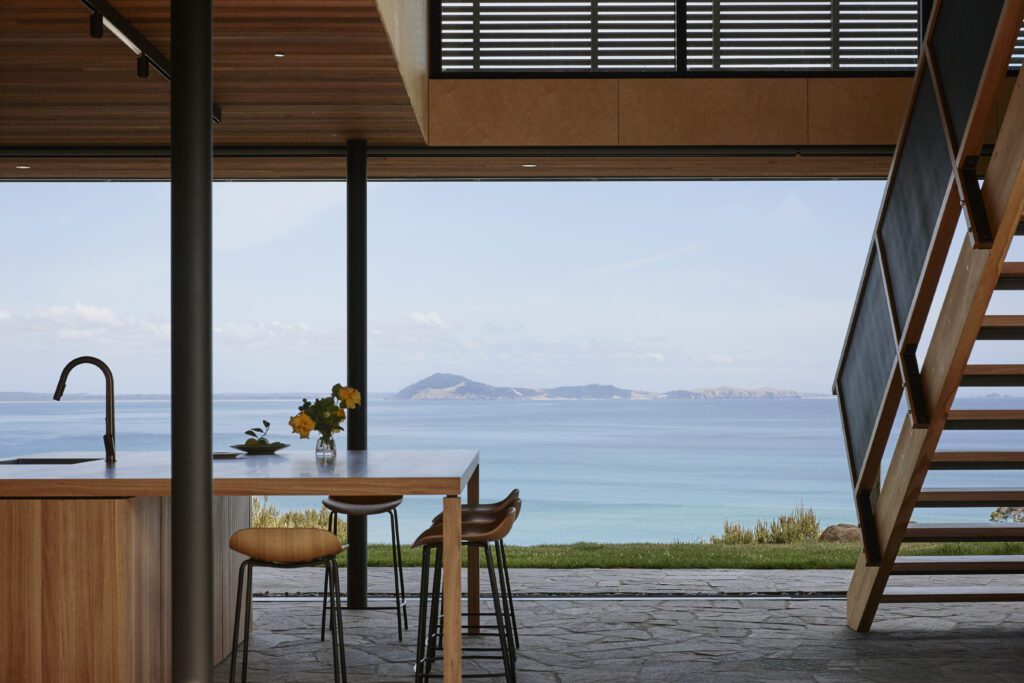Johnstone Callaghan Architects has designed a playful and daring home for an industry insider wanting to slow down and be surrounded by high levels of craftsmanship in entirely unexpected ways.
“A lot of our concept designs are rich in ideas and detail, but, for various reasons, some of those sometimes get left behind,” says Prue Johnstone of Johnstone Callaghan Architects, synthesising that trope of projects in which budgetary constraints, unexpected remedial works, or conservative clients can sometimes squeeze the joie de vivre out of the project management spreadsheet.
“However, with [these] clients, when we presented something, they would always say, ‘Yes, and what else can we do?’ They were equalling our appetite for challenging and pushing the boundaries of materials and craft.”
This daring spirit is no coincidence: one of the owners is Clive Barrington, the renowned Cantabrian building contractor whose business slogan is: ‘The Architect’s Builder’. “I’m just a carpenter, but building and architecture [are] my life,” Clive tells HOME, while holidaying in the sunny, postcard-ready streets of the Cotswolds in the UK.

“I have lived and breathed [that] for nearly 50 years, and this house is really built for us to slow down.”
During his 44-year career, Clive has collaborated with some of the country’s most successful designers to produce spaces that range from small, DOC-inspired huts through to multimillion-dollar homes with high levels of complexity and craft.
“The company has a team of nearly 50,” says Clive, “and is full on, so when I get home I just want a piece of what we produce day after day.”
He and his wife Gill had been living in the countryside, and part of this ‘slowing down’ he mentions included swapping their large, architect-designed house — built more than 23 years ago on 10 acres of land — for something less maintenance-heavy that would allow them more time to travel.

The Canterbury Clay Bricks product fitted that part of the brief beautifully. “They wanted something solid,” says Mike Callaghan, co-director of Johnstone Callaghan, highlighting the importance of ‘stability’ and ‘anchoring’ in a region still recovering from the trauma caused by earthquakes.
“They wanted a sense of permanence to the home while also fitting in with the local environment” — as well as some references to Australian architecture, which the client enjoys. The Merivale site was not without its difficulties. It is a tight, long piece of land oriented 28 degrees north-west with access from the street to the south and a set of new apartments at the rear.
This means the street frontage is a small sliver while the largest expanses face west towards another house and east to a recently erected church. Add to that the fact that the clients wanted two houses — a townhouse at the rear of the site was intended for their son and grandkids, but has since been onsold — and the architects needed some clever planning.

“A well-planned programme was essential,” says Clive, “although, [with it] being our own home, we had the luxury of slowing it down if needed. Things were not rushed because they didn’t have to be.”
“It’s essentially a multi-residence housing project,” says Prue, “with both houses needing a unique response.” However, the rear dwelling being smaller and somewhat ‘secondary’ has meant the architects have used similar materials — for cohesion, economics, and visual flow— but in a way that is more accessible.
According to the architects, they responded to the site by overlaying vehicle access, circulation, and garaging for both abodes toward the west. They also extended building footprints to maximise the sites and cut away building forms to respond to sun, light, and outlook from internal spaces.
“These cutaways … provide space for services, outdoor living areas, and outlook.” Likewise, the block-like forms that make up the solid volumes of each floor have been stacked (the project is titled ‘Builders’ Blocks’, after all).

The horizontally laid white bricks have been capped with a double layer of vertical red ones, adding a striking graphic element that boldly delineates each geometry. This stacking was done, in part, to reduce the bulk — the larger form at the bottom, moving onto a more serrated, sometimes open, middle, and graduating up to a small roof space: a metal-clad ‘gin room’ and office for Clive.
By reducing what could have been a very brutalist shape, the result became “a little bit more sympathetic to the neighbourhood,” explains Prue.
Another technique to reduce the bulk involved using brick lattice walls in some areas, meaning the house breathes, both visually and thermally, allowing some porosity and sight-lines, both in and to the street.
The most expressive, western elevation is a playful affair. On paper it seems a tad New Mexico — a myriad of horizontal volumes in contrasting red and white — yet the materiality also hints at contemporary Australian architecture, more specifically, some of The Lucky Country’s recent boutique hotels (Brisbane’s The Calile, perhaps?).

This boutique accommodation vibe is further cemented in the interior. VidaSpace and Snelling Studio, ECC and Nightworks, as well as Simon James and Plumbline, all add that touch of relaxed luxe.
“Yes, Jill had quite a strong brief and she was quite keen that some of these interior spaces felt almost like a high-end hotel suite,” says Mike. Prue added, “We interpreted that to be quite rich in the material palette, which also worked well alongside Clive’s desire for it to be crafted and have some natural materials.”
“The details were very important to me,” says Clive. “As a carpenter by trade, I wanted some timber inside, exposing some of the structure, seeing beautiful joints, and displaying a true carpenter’s craft. Careful thought went into junctions where bricks met timber, where bricks met plaster, and things lined up. Simple stuff, done well.”

Spatial planning also plays a part in this feeling of well-crafted, relaxed luxury, and nowhere is this more obvious than in the main kitchen, living area. “The idea is that [the owners] can exist on the ground level without having to open or close any doors,” says Mike.
“[Views] from the kitchen to the living to the dining to the courtyard to the bedroom to the wardrobe and into their own suite are all open. So they can feel like [they are] in a hotel suite, on a single level, where all the doors are full-cavity sliders that peel right back so that they don’t need to be closed.”

There is something delicate and fun at play in this project, an unexpected synergy of many building tricks working in tandem. A mansard/Canterbury prickle, pale and red brick, unexpected curvatures and porosities — these all inhabit places where the more mundane response would have been solidity and flatness.
All these sets of architectural and building solutions reveal the fact that the owners of this house cherish the craft and wish to live within something that celebrates it fully, and in entirely personal ways.
Project Credits
Architecture: Johnstone Callaghan Architects
Build: Clive Barrington Construction
Words: Federico Monsalve
Images: Sam Hartnett
Brick: Canterbury Clay Bricks
Roofing: Viking Roofspec
Paving: Timaru Bluestone
Joinery: APL/Hagley Aluminium
Flooring: VidaSpace
Tapware: Plumbline
Lighting: ECC, Nightworks Studio, Snelling Studio
Furniture: Simon James, Woodwrights, Jardin
